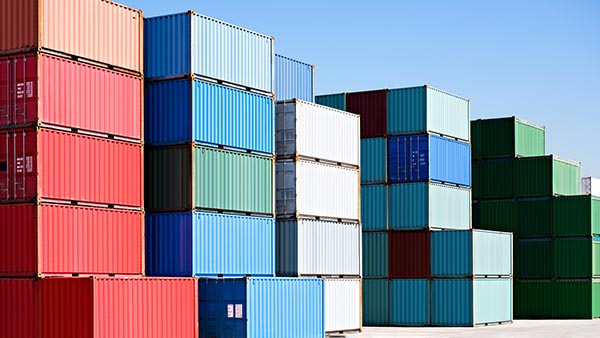Editor’s Note: The SCM thesis The Green Route: An Analysis of Mode Change as a Strategy for Carbon Emission Reduction was authored by Elizabeth Bruttomesso and Shruti Pant and supervised by Dr. Elenna Dugundji (elenna_d@mit.edu) and Dr. Thomas Koch (thakoch@mit.edu). For more information on the research, please contact the thesis supervisors.
Faced with the pressing imperatives of pursuing net-zero emissions targets and promoting sustainable development, the marine transportation sector is actively seeking innovative ways to achieve these goals. One promising solution is to establish green intermodal corridors that reduce carbon emissions. For a route to be viable as a green corridor, it must have the potential for significant decarbonization while also providing economic benefits. We believe inland drayage transportation is a strong candidate for applying this approach. We therefore conducted feasibility assessments for three drayage corridors from an East Coast seaport, exploring different scenarios for each of these routes and comparing them with current operations in terms of operating costs and carbon emissions.
Exploring the route less traveled
Currently, the marine transportation industry predominantly utilizes diesel trucks for the delivery of cargo from the port to the warehouse. However, this method is associated with high carbon emissions. There is a need to explore alternate routes and modes of transport that can efficiently balance costs and emissions, guiding companies in making decisions about future infrastructure and routing.
In this study, we sought to find out if using an electric barge and a hybrid barge in combination with an electric truck (Route 1), an electric truck alone (Route 2), or an electric train in combination with an electric truck (Route 3) would be viable alternatives to traditional diesel trucks. To evaluate these routes, we considered the cost of transportation, necessary infrastructure improvements, and carbon emissions for both the proposed options and the current diesel truck operations.
Carbon emissions were a crucial component of our calculations. For each mode of transportation, we took into account not only the direct emissions but also the emissions associated with generating electricity used by electric vehicles. Emission factors were sourced from The Green Freight Handbook and converted to metric tons per TEU mile. Additionally, we considered the national average price for diesel as reported by the U.S. Department of Energy for Oct. 1–15, 2022, to estimate fuel costs.
Opening a corridor to net zero
Our analysis revealed specific findings regarding the costs and carbon emissions of the proposed green intermodal corridors. Electric trucks (Route 2) emerged as the most cost-efficient alternative. Compared to traditional diesel trucks, adopting electric trucks can reduce operational costs by 60% and carbon emissions by 89% per year. The payback period for the initial investment in electric trucks was estimated to be 17 years.
In contrast, Route 1 (electric barge + electric truck) and Route 3 (electric train + electric truck) presented higher costs and longer payback periods, making them unsuitable investments in the short term. Specifically, Route 1 showed a 10% increase in operational costs compared to diesel trucks and a 170% increase in carbon emissions. Route 1 with a hybrid barge has 5% decrease in operating cost and a 78% decrease in carbon emission but has a payback period over 100 years. Route 3 showed a 25% decrease in operational costs but has an 80% increase in carbon emissions.
Despite the higher costs associated with electric barges and trains, companies should not disregard these options entirely. There is potential for costs to be reduced through advancements in battery technology and economies of scale. Moreover, collaboration among stakeholders to develop reliable electricity supply sources and charging infrastructure is vital for these alternatives to become viable in the future.
For a successful transition to green corridors, the transportation industry, government, and stakeholders need to share risks and burdens. Together, they can bridge the total cost of ownership gap that arises with adopting these alternate pathways, thereby contributing to the establishment of sustainable green routes with lower carbon emissions.
Supply Chain Management Review
About the Capstone projects
Every year, approximately 80 students in the MIT Center for Transportation & Logistics’s (MIT CTL) Master of Supply Chain Management (SCM) program complete approximately 45 one-year research projects.
These students are early-career business professionals from multiple countries, with two to 10 years of experience in the industry. Most of the research projects are chosen, sponsored by, and carried out in collaboration with multinational corporations. Joint teams that include MIT SCM students and MIT CTL faculty work on real-world problems. In this series, they summarize a selection of the latest SCM research.

